It’s very fitting that one of the two fighters adorning the cover of UFC 4, EA Sports’ latest realization of the world’s biggest mixed martial arts organization, is Jorge Masvidal. Once just a solid journeyman fighter, the last year or two saw “Gamebred” make small but significant changes to his fighting style, resulting in hugely exciting moments of crowd-pleasing success.
When it recently came time for Masvidal to grab that ultimate prize and become UFC champion though, his attempt to be added to the list of G.O.A.T.’s (that’s Greatest Of All Time), fell short of the mark. Masdival still put in a very respectable performance and showed promise that he would probably pull a bid for the championship off perfectly the next time he steps into the Octogon. And that, in a nutshell, is UFC 4 as well.

On a first cursory glance, there’s not that much that’s different to UFC 3. You have most of the same game modes returning, although the reviled microtransaction-heavy Ultimate Team mode is thankfully gone. The UI is very familiar and the massively deep fighting system is still intimidating at first. Disappointingly, even the visuals look the same from past efforts despite some new damage modeling and body deformation tech. How is it that EA Sports apparently peaked with rendering digital pugilists with the Fight Night franchise from a decade ago and hasn’t made any significant improvements since?
But evolution is very rarely a showy momentous spectacle. Rather, to quote Merriam-Webster, it’s “a process of continuous change from a lower, simpler, or worse to a higher, more complex, or better state”. And that’s what EA Sports has done here.
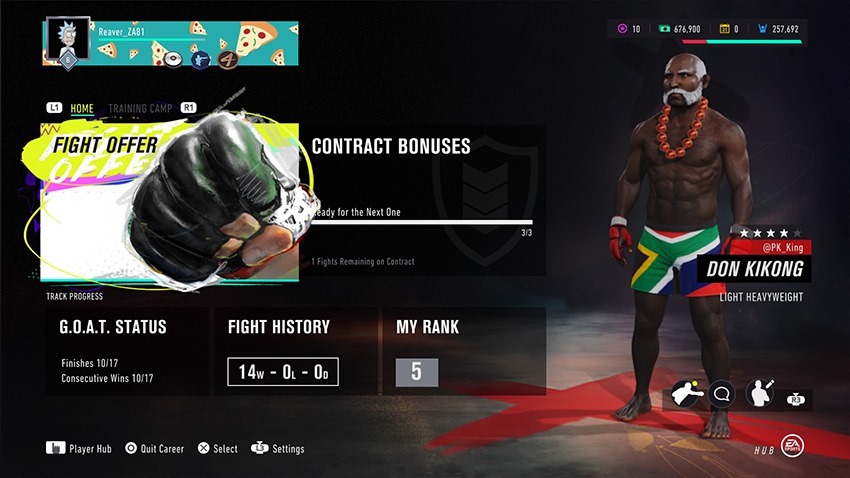
As mentioned above, playing a UFC game has always been, to put it mildly, a lot. There were so many various button combinations to give you different strikes, takedowns, and grappling transitions that newcomers often felt like they needed to turn their fingers into pretzels to pull off high-level techniques. UFC 4 takes steps to try and alleviate that. It’s still a lot – like, A LOT! – but with either tapping or holding a button input now being the difference between fast, efficient strikes or powerful, flashy moves, there are fewer button combinations to remember and more fluid control in combos that takes striking to the best it has ever been in a game.
Clinching has also been completely overhauled so that breaking out of a standing hold is as simple as moving away from your opponent and no longer requires a painfully prolonged extraction process. On top of also being able to clinch against the cage, you also have all-new options to unleash violence on your opponent or you can transition to wrestling takedowns seamlessly.
Even more notable is UFC 4’s reworked grappling controls for when the fight hits the mat. The new Grappling Assist system relies on just three different inputs on the left thumbstick to perform all actions. Push up to try and get up, right to ground-and-pound, and left to submit, with the game automatically transitioning you through the required series of positions that it feels will allow you to eventually pull off your intended action.
It’s also a bit crap.
Going through the game’s rather helpful tutorial section immediately clues you in that Grappling Assist is meant to be the equivalent of training wheels, often not capable of performing the precise actions you would actually want it to against more advanced opponents. UFC 4 actually warns you that Grappling Assist should not be used outside of the Career Mode.
Instead, for online fights and the like, you should use the traditional Legacy control scheme – a context-sensitive grappling menu accessible through the right thumbstick with a combination of shoulder buttons for advanced moves – or the new Hybrid system that allows both left and right thumbstick systems simultaneously. It wasn’t long before I was back to using the superior Legacy mode in my career as I got to grips with the fight mechanics and realized just how little control I had with Grappling Assist turned on.
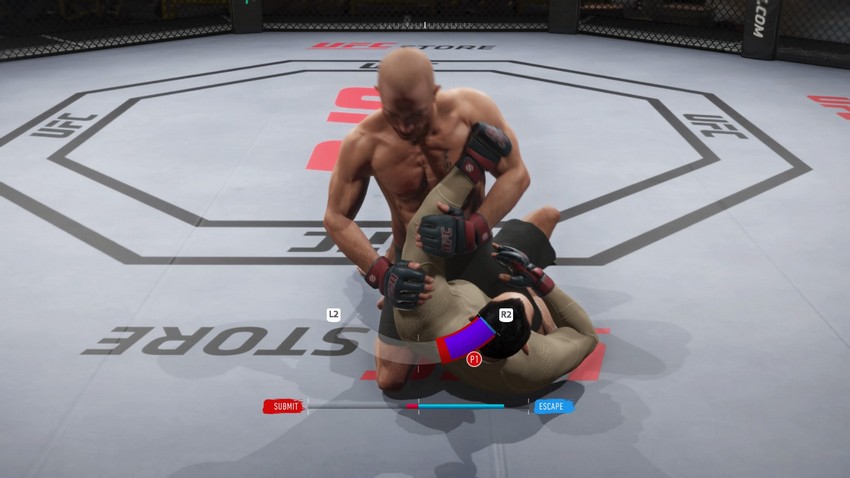
Even with the more advanced controls and my increasing comfort with them though, I never quite felt entirely confident in the game’s submission system, which essentially takes the form of one of two minigames. For chokes you need to engage in a cat and mouse chase as you use your left stick to try and cover your opponent’s circular bar with one of your own to build a meter that sinks in the choke even further while they build meter to escape by avoiding you. For joint holds, you need to incrementally squeeze L2 and R2 to swing a semicircular bar back and forth to once again cover your opponent’s bar. In both cases, moving erratically will see your bar either increase or decrease in size to make attacking or defending harder, prompting a more measured approach.
And again, it’s kind of crappy.
The submissions here feel clunky and are drawn out far too long, with this laboured mini-game often taking over a minute to lock in even when playing with jiu-jitsu specialists (who fill their meters quicker and now get access to additional context-sensitive moves like chained submissions or slams). Not to mention trying to prevent yourself from getting into a position to be submitted is really tough. You can defend against wrestling transitions easy enough: Hold R2 and tap your right stick in the direction of an on-screen prompt before your opponent can complete his move in that direction. The problem is that this prompt is missing outside of training, turning the whole affair into just blind guesswork most of the time unless you spot very subtle cues in character animations.
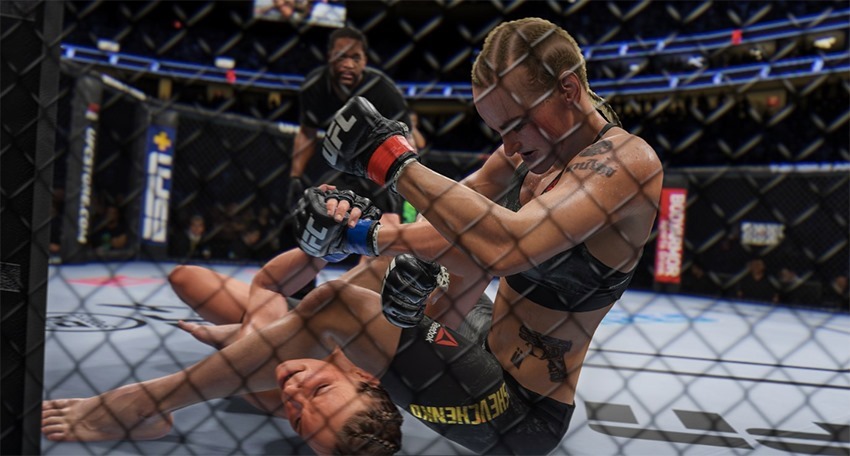
And you can almost see EA Sports acknowledging their own shortcomings in this regard as most of the alternative fight modes on offer are all striking-only affairs with grappling left out entirely. The highlight of these has to be the returning Knockout Mode which turns everything into an arcade-style fighting game complete with life bars. New are two special arenas in Backyard – a nod to Jorge Masvidal’s street fighting roots – and Kumite. It’s the latter that truly shines and elevates Knockout Mode several notches higher as it’s pulled straight from a classic Jean-Claude Van Damme action film, complete with gloriously cheesy music, over the top sound effects, rope-bound hands, and booming voiceovers.
It really is the ultimate feel-good party mode of this game for when you just want to have some friends over to punch each other in the face without needing to memorize lengthy control schemes. And if you’re South African that may be the best option as I really struggled to find online games through matchmaking. Even inviting a friend into a lobby for a Quick Fight saw some noticeable latency issues.
As enjoyable as Knockout Mode is though, UFC 4’s Career Mode is still very much the game’s bread and butter. It’s the most polished platform where you learn the ropes as you take your custom built fighter from amateur nobody to UFC champion and even beyond to G.O.A.T. status (a feat that took me about 25hrs of game time per character). Doing that entails you being taken under the wing of fictional ex-UFC fighter Coach Davis who has you not just training and scoring increasingly bigger fight contracts with more difficult bonus clauses, but also guiding your social media presence to build hype for yourself.
It’s this balancing act that is the pre-fight minigame you’ll spend a rather significant amount of time on as you have to divvy up the allocated weekly timeslots in a fight camp between sponsorship promos, sparring (which earns you points to spend on fighter stats and builds up fitness the harder you push but now runs the risk of potential injury), doing injury-free punching bag drills that only advance your fitness level, or even bringing in other fighters to learn new techniques.
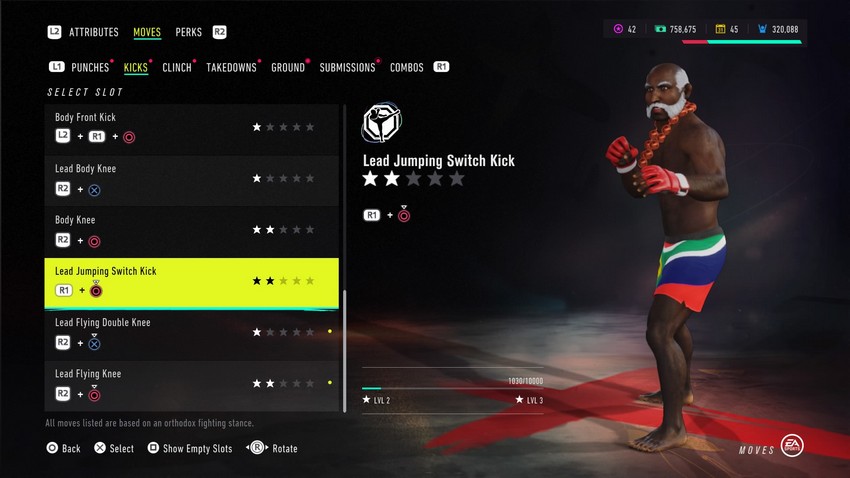
Underpinning all of this is the new Fighter Evolution system, which is easily UFC 4’s best advancement. Not only will training techniques in sparring see them level up, but just using them successfully during fights will do the same even faster. Like frequently throwing lead hooks or switch kicks as I did? Then you will rapidly see these moves rise up in rank on the fly, increasing their power, speed, and effectiveness just by throwing them more. It’s a very simple but ingenious system that makes sure that your fighter grows precisely to suit your preferred playstyle.
Just like with real life fighters, social media also plays a big role as negative online interactions with other fighters (which, admittedly feel rather half-baked and limited) could potentially give you a rival. This could create hype with fans in the process, but then cost you being able to train with that fighter later. Fortunately, you have such a gigantic roster of potential fighters to train with – really only limited by how much of your earnings and fight camp time you’re willing to spend – that you’ll barely notice if you upset a few of them. So, of course, I was a giant dick to everybody who deigned to call me out so that I could land those lucrative big money fights!
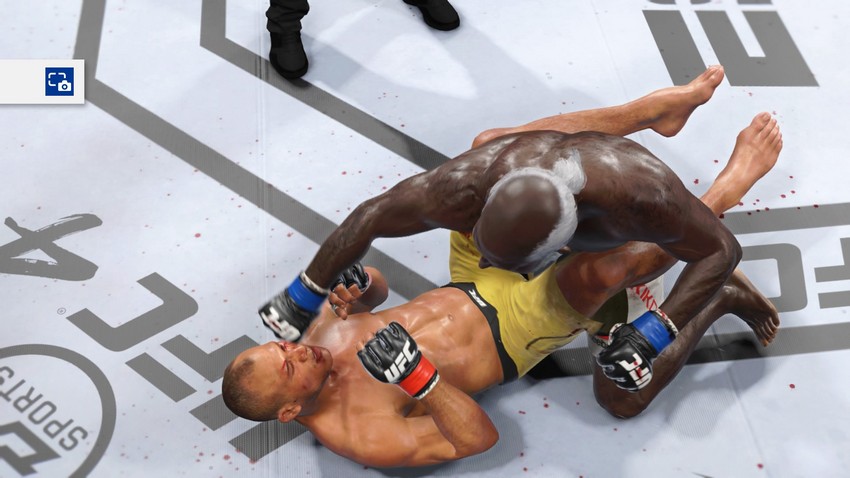
Besides being a massive rampaging penis, I was also a balding old Indian man thanks to the game’s very detailed fighter customization (it’s also here where you can spend the game’s ultra-frugal in-game currency – which you can top up with real-world money – on cosmetic items). So why did I make my character a balding old Indian man? Because clearly SOMEBODY WAS GONNA GET A HURT REAL BAD! Yes, I created my character just so that I could use a punchline from an old Russell Peters standup comedy act in a review.
Luckily, there’s more to UFC 4 than just acting as a muse for bad gags, as the folks at EA have mostly done a good job at making this the best MMA game we’ve had to date, even despite its issues (which also includes repetitive fight commentary and a criminally bland soundtrack). To borrow from a different video game franchise that couldn’t be more different, this is combat evolved.
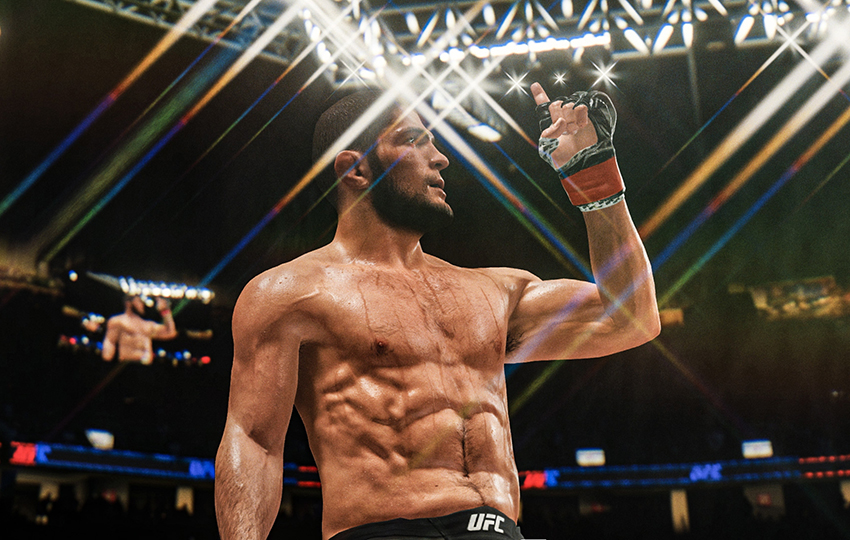
Last Updated: August 21, 2020
| UFC 4 | |
|
Thanks to some rather insightful evolutions from its predecessor, a deep fighting system that rewards dedication, and some super fun alternative modes for the more casual player, EA Sports UFC 4 is undoubtedly the greatest mixed martial arts video game we've seen to date. But being the greatest doesn't mean perfect as there's still room for improvement thanks to a wonky submission system and dated visuals.
|
/10
|
|---|---|
| UFC 4 was reviewed on PlayStation 4 | |
|
78 /
100
| |





















Seeker
August 21, 2020 at 13:24
EA should have spent a little more of the money they saved by releasing the same game with minor tweaks on a better graphic designer.
The covers for all their latest sports titles look like they were put together by a child using MS paint.
For the Emperor!
August 21, 2020 at 14:12
Watching some Chris Smoove videos of this. I am enticed, but would rather wait for the next generation before I buy another console game…